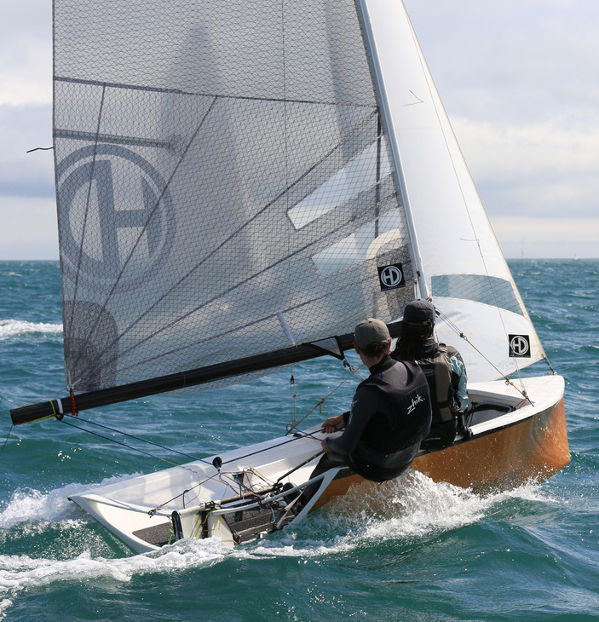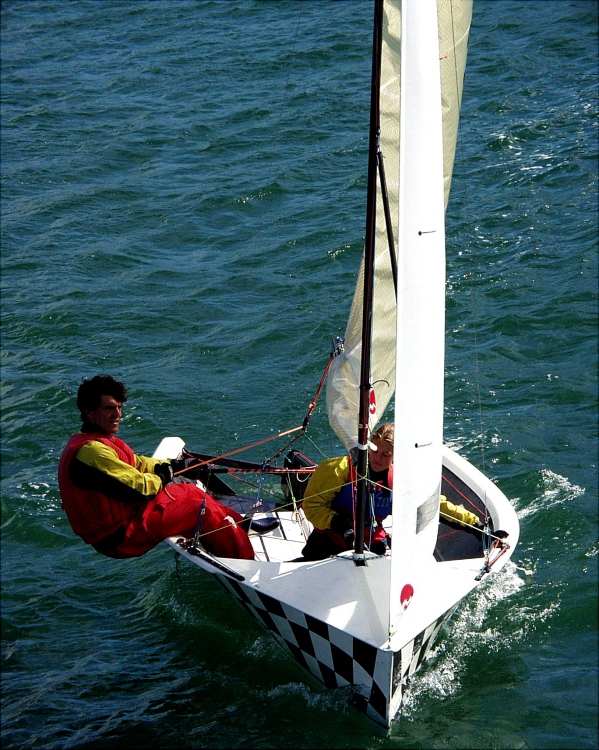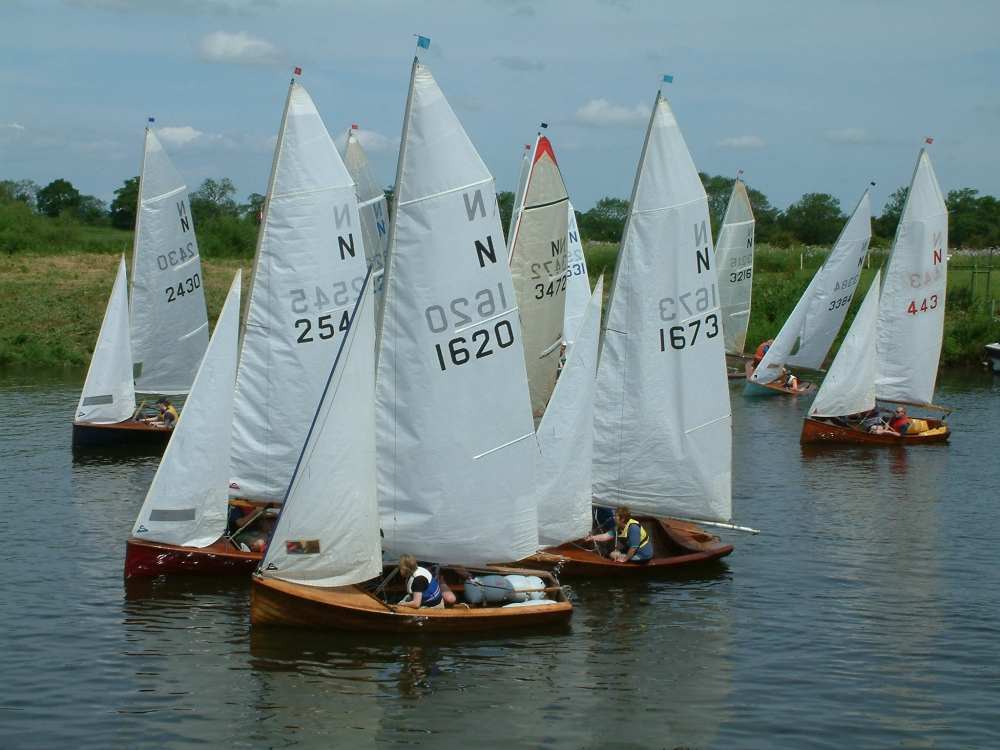About the National Twelve
The National 12 is a two person, two sail racing dinghy. With a main & jib area of around 10.4 sq metres (864m2 measured) and weighting in at only 78Kg, including mast and centre-board, there is ample power to drive the fast and responsive hull. The 12 is a development class so hulls and rigs can be changed or modified within the class rules. The range of hulls and rigs allow helm-crew combinations between 16 & 23 stone to be competitive. You are free to fit your boats out as you please so you can customise your twelve to your requirements - this is particular useful if you are sailing with young children. View the introductory video (below) to learn more about the key features
Designs in the class have evolved with a steady trend of increasing width, to provide greater righting moment and carry more power; flattening the stern to promote planing; and narrowing the bow to help with pointing up wind and reduce drag.
The construction techniques, material and rigs have also evolved over time and the history pages describe the evolution. The current boats are typically made from glass or carbon foam sandwich, and sport carbon masts and booms. The hull construction makes for a light and stiff boat that is responsive and easy to handle on the shore. The carbon masts are flexible, meaning the rig handles gusts better - with the top of the mail sail twisting off in the gusts and transferring more of the gust into forward speed. The carbon rigs are also good for helping you "go through the gears". Lots of mast bend can be used to flatten the main sail, in order to de-power, but powering up is as easy as straightening the mast. In a well set up boat, a large range of gears can be selected simply through controlling the kicker tension.
Is a 12 for you? If you like a boat that turns on a sixpence, rewards you with extra speed for the effort (hiking out) that you put in, is exhilarating to sail off-wind, and glides effortlessly through the water even in light conditions, then the 12 if perfect for you! The best way to find out if you like them is to try one! We will arrange a free test sail at an N12 club near you. And when you've found your 12, join the association.
There are a variety of different designs of Twelve (as described in more detail below), and these fit within four main classifications in the fleet; double-bottomed, foilers, Admiral's Cuppers and vintage. There are often prizes for these different classifications at the major events. The design pages give you the low-down on the most popular designs and will guide you to a suitable boat, whether you're looking to sail inland, on the sea or at either the heavy or light end of the weight range.

Great racing & fascinating history
If you're interested in the history then you can watch 70 years of development to find out more.
If you need any more advice in choosing a Twelve, please e-mail us: ntoa@national12.org. Want to know more about the class history or would like advice on choosing a 12? Find more info on the design types below . . .
Main types of Twelves

T-Foilers
T-Foiled rudders have been common from the year 2010, and can be retro-fitted to earlier boats. The T-foil is on the rudder and provides additional lift. It reduces the wave-making drag and helps the transition from displacement to planing mode. With a T-Foil rudder, 12s are able to carry heavier crews.

Double Bottoms
Double bottoms were introduced in 1996. A number of popular designs have been built since. These are self-draining and the construction method for most new boats. T-Foiled rudders can be retro-fitted and improve the performance in marginal planing conditions making these boats pretty competitive

Admirals Cuppers
These are single floored boats (generally pre 1995). Special prizes are awarded at many open meetings for Admiral's Cup boats. T-foils have been retro-fitted to improve the performance in marginal planning conditions.

Vintage boats
Vintage 12s are clinker construction, and compete in many vintage events. There are rules that limit how much a vintage boat can be modified, in order to preserve the spirit of the beautiful vintage wing.
